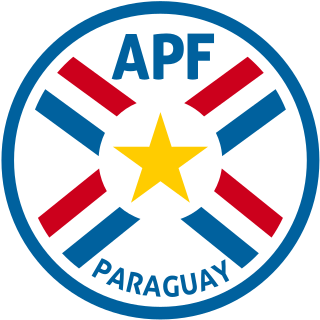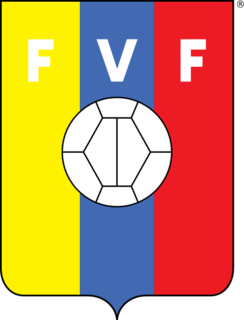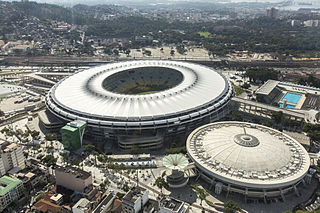Related Research Articles

South America is a continent entirely in the Western Hemisphere and mostly in the Southern Hemisphere, with a relatively small portion in the Northern Hemisphere. It can also be described as a southern subcontinent of the Americas. The reference to South America instead of other regions has increased in the last decades due to changing geopolitical dynamics.
CONMEBOL Copa América, known until 1975 as the South American Football Championship, is the main men's football tournament contested among national teams from CONMEBOL. It is the oldest international football competition, and is the third most watched competition. The competition determines the champions of South America. Since the 1990s, teams from North America and Asia have also been invited to participate.

The Andean Community is a free trade area with the objective of creating a customs union comprising the South American countries of Bolivia, Colombia, Ecuador, and Peru. The trade bloc was called the Andean Pact until 1969 and came into existence when the Cartagena Agreement was signed in 1996. Its headquarters are in Lima, Peru.

The Southern Cone is a geographic and cultural region composed of the southernmost areas of South America, mostly south of the Tropic of Capricorn. Traditionally, it covers Argentina, Chile and Uruguay, bounded on the west by the Pacific Ocean and on the east by the Atlantic Ocean. In terms of social, economic and political geography, the Southern Cone comprises Argentina, Chile, and Uruguay, and sometimes includes Brazil's four southernmost states. In its broadest definition, taking into account common history and geography, it also includes Paraguay, another Spanish-speaking country.

The Paraguay national football team represents Paraguay in men's international football competitions, and are controlled by the Paraguayan Football Association. Paraguay is a member of CONMEBOL. The Albirroja has qualified for eight FIFA World Cup competitions, with their best performance coming in 2010 when they reached the quarter-finals. A regular participant at the Copa América, Paraguay have been crowned champions of the competition on two occasions. Paraguay's highest FIFA World Rankings was 8th and their lowest was 103. Paraguay was awarded second place with Best Move of the Year in 1996 for their rise in the FIFA Rankings.

The Venezuela national football team represents Venezuela in men's international football and is controlled by the Venezuelan Football Federation (FVF), the governing body for football in Venezuela. They are nicknamed La Vinotinto because of the traditional burgundy color of their shirts. When playing at home in official games, they usually rotate between three stadiums: The Polideportivo Cachamay in Puerto Ordaz, the Estadio José Antonio Anzoátegui in Puerto La Cruz and the Estadio Pueblo Nuevo in San Cristóbal. In friendly matches, they tend to rotate between the rest of the stadiums in the country.

The Union of South American Nations is an intergovernmental regional organization that once comprised twelve South American countries; as of 2019, most have withdrawn.
Latin Americans are the citizens of the Latin American countries and dependencies. Latin American countries are multi-ethnic, home to people of different ethnic and national backgrounds. As a result, some Latin Americans do not take their nationality as an ethnicity, but identify themselves with both their nationality and their ancestral origins. Aside from the indigenous Amerindian population, all Latin Americans or their ancestors immigrated since 1492. Latin America has the largest diasporas of Spaniards, Portuguese, Black Africans, Italians, Lebanese and Japanese in the world. The region also has large German, French, and Jewish diasporas.
Latin American involvement in international peacekeeping dates back to the start of United Nations peacekeeping efforts with the Organization's founding in the 1940s but has seen a sharp acceleration in recent years.
South America has an estimated population of 418,76 million people.

The following outline is provided as an overview of and topical guide to South America.

Association football is the most popular sport in almost all South American countries. There are a wide range of sports played in the continent of South America. Popular sports include baseball, basketball, rugby union, tennis, golf, volleyball, hockey, beach volleyball, motorsports and cricket.

The Peru national football team has represented Peru in international football since 1927. Their first match came against Uruguay at the 1927 South American Championship. As of September 2019, Peru has played 645 matches with 212 wins, 157 draws, and 276 losses.

Mercosur, Mercosul, or Ñemby Ñemuha, officially Southern Common Market, is a South American trade bloc established by the Treaty of Asunción in 1991 and Protocol of Ouro Preto in 1994. Its full members are Argentina, Brazil, Paraguay and Uruguay. Venezuela is a full member but has been suspended since 1 December 2016. Associate countries are Bolivia, Chile, Colombia, Ecuador, Guyana, Peru and Suriname.
The Global System of Trade Preferences among Developing Countries (GSTP) is a preferential trade agreement signed on 13 April 1988 with the aim of increasing trade between developing countries in the framework of the United Nations Conference on Trade and Development. Its entry into force was on 19 April 1989 and its notification to the WTO on 25 September 1989.

Currently, Mercosur is composed of five full members, five associated countries and two observer countries:

This is a list of the Colombia national football team results from 1980 to 1999.

This is a list of the Colombia national football team results from 2000 to 2019.
The 1986 South American Under-16 Football Championship was the 2nd edition of the South American Under-17 Football Championship, a football competition for the under-16 national teams in South America organized by CONMEBOL. It was held in Peru from 4 to 19 October 1986.
Venezuelan Brazilians are individuals of full, partial, or predominantly Venezuelan ancestry, or a Venezuelan-born person residing in Brazil. Until the early 2010s, the immigration of this group was little expressive compared to the immigration of other South American peoples such as Argentines, Bolivians or Paraguayans, but because of the crisis in Venezuela promoting by Hugo Chávez and Nicolás Maduro for the Bolivarian Revolution, the Bolivarian Republic saw hundreds of people become refugees in other parts of Latin America, including Brazil, which today is one of the 10 countries with more Venezuelans in the world.
References
- ↑ Uruguayans in Brazil Archived June 13, 2007, at the Wayback Machine
- ↑ Chileans in Brazil Archived June 13, 2007, at the Wayback Machine
- ↑ Bolivians in Brazil Archived June 13, 2007, at the Wayback Machine
- ↑ Argentine in Brazil
- ↑ Paraguayans in Brazil
- ↑ Peruvians in Brazil
- ↑ "UNHCR welcomes Brazil's decision to recognize thousands of Venezuelans as refugees". United Nations High Commissioner for Refugees . United Nations. 6 December 2019. Retrieved 15 December 2019.